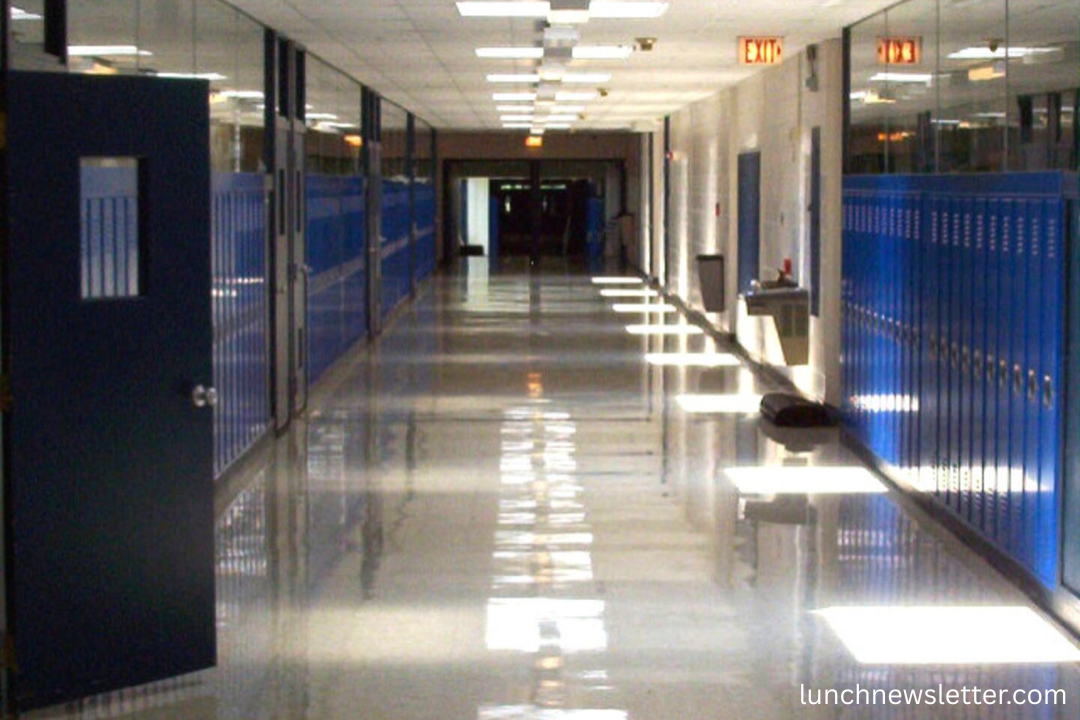A silent corridor is a designated area within a school where students are expected to remain quiet while moving between classes. The idea is to foster a calm and orderly environment, reduce distractions, and help students transition smoothly between lessons. In schools with silent corridors, students are typically instructed to speak only when necessary, and any talking or noise is discouraged.
While this policy aims to improve the focus and atmosphere within the school, it has not been without controversy. Some believe that it helps maintain discipline, while others, like the concerned father in this case, argue that it may be overly restrictive.
The Father’s Backlash – A Closer Look
A father recently made headlines after expressing his frustration with the silent corridor policy at his child’s school. He threatened to withdraw his child from the institution, citing the restrictive nature of the rule and its negative impact on his child’s experience.
The father argues that the silent corridor is an unnecessary measure that stifles student expression and makes the school environment feel too rigid. In his view, students should be allowed to interact and engage with each other, even while moving between classes. He believes that the enforced silence can create a sense of isolation and anxiety among students.
His threat to remove his child from the school is a powerful statement against the policy, and it has raised questions about the balance between maintaining discipline and respecting students’ social needs.
Why Silent Corridors Are Introduced
The concept of silent corridors is rooted in the belief that a quieter school environment leads to improved focus and concentration. Proponents of the policy argue that students benefit from the calm atmosphere, which allows them to transition between lessons without the chaos that often accompanies crowded hallways. Some of the key reasons schools introduce silent corridors include:
- Reducing Noise Levels: Hallways can be noisy, especially in large schools with many students. Silent corridors aim to reduce the noise, creating a more focused environment.
- Promoting Discipline: Schools hope to promote discipline and encourage students to be more mindful of their surroundings by enforcing quiet movement.
- Improving Learning Environment: A quieter school can lead to fewer distractions and a more conducive atmosphere for learning both in and outside the classroom.
Despite these intended benefits, not all students, parents, and teachers agree that this policy is beneficial or practical.
The Downside of Silent Corridors – What Parents and Students Think
While some may see the silent corridor policy as a necessary measure for maintaining order, many parents and students feel that it stifles creativity, social interaction, and freedom of expression. The father who voiced his objections argues that the policy is too restrictive and undermines the social aspect of school life.
Impact on Student Well being
For many students, school is not only about academics but also about building relationships and social skills. The introduction of a silent corridor could negatively affect this aspect of the school experience, particularly for younger students who may find it challenging to navigate a tranquil environment.
Students may feel alienated or anxious in these silent corridors, as the lack of interaction can feel isolating. Furthermore, the pressure to remain quiet might increase stress levels, particularly for students who are already dealing with anxiety or social challenges.
Potential Impact on Communication Skills
A significant part of personal development in school involves learning how to communicate effectively with peers and adults. Silent corridors restrict this communication, which could hinder students’ ability to engage in meaningful discussions and build their interpersonal skills. Critics argue that students should be allowed to have conversations, express themselves, and develop social bonds even when moving between classes.
Alternative Approaches to Achieving School Discipline
While the silent corridor policy aims to promote a quieter, more disciplined school environment, it is not the only approach to achieving these goals. Several alternative strategies can maintain order while still fostering a positive social atmosphere.
Implementing Designated Quiet Spaces
Rather than making all corridors silent, schools could designate specific quiet areas where students can go if they need peace. This would allow those who prefer a more peaceful environment to have the space they need while still enabling students who enjoy socializing to interact in other parts of the school.
Fostering a Positive School Culture
Schools can also focus on creating a positive school culture where students feel comfortable expressing themselves, both in and outside of the classroom. Encouraging open communication, peer mentoring, and collaboration could help foster a sense of community without resorting to restrictive policies like silent corridors.
Mindfulness and Stress Relief Activities
Incorporating mindfulness exercises or stress-relief activities into the school day could help students regulate their behavior and emotional responses without the need for strict rules. This could involve offering workshops or classes on meditation, breathing exercises, or conflict resolution, which could create a more peaceful atmosphere in a way that respects students’ social needs.
What Schools Can Learn from the Backlash

The father’s objection to the silent corridor policy offers valuable insight into how parents and students can perceive such policies. Schools must consider students’ social and emotional needs when implementing rules that impact their day-to-day lives. Striking a balance between discipline and freedom, allowing students to engage with their peers while maintaining a productive learning environment, is essential.
Importance of Open Dialogue
One key takeaway from this backlash is the importance of open dialogue between schools, parents, and students. Policies like silent corridors can be divisive, and schools must consider feedback from all parties involved before making decisions that affect students’ daily experiences.
Frequently Asked Questions (FAQ’s)
What is a silent corridor in schools?
A silent corridor is a designated hallway or area within a school where students are expected to remain quiet while transitioning between classes. The goal is to reduce noise and create a calm atmosphere.
Why do some parents oppose silent corridors?
Some parents, like the father mentioned in the article, believe that silent corridors restrict student interaction, stifle expression, and can lead to feelings of isolation. They argue that it is too rigid and doesn’t promote healthy communication.
How do silent corridors affect students’ social interactions?
Silent corridors limit students’ ability to engage with their peers while moving between classes. Critics argue this can negatively impact students’ socialization, preventing them from building essential communication skills and forming friendships.
Are there any benefits to silent corridors?
Supporters of the silent corridor policy argue that it helps maintain order in schools, reduces distractions, and promotes focus. The policy is also seen as a way to foster a calm and disciplined learning environment.
Can schools achieve discipline without silent corridors?
Yes, there are alternative methods to maintain discipline, such as implementing quiet spaces, promoting mindfulness activities, and fostering a positive school culture where students can engage socially without the need for complete silence in corridors.
Do silent corridors improve student performance?
While the idea behind silent corridors is to reduce distractions and create a focused environment, there is limited evidence linking silent corridors directly to improved academic performance. The impact can vary depending on how students respond to the policy.
Are silent corridors common in schools?
Silent corridors are becoming increasingly common in some schools, especially in countries that emphasize discipline and order. However, many schools still prioritize social interaction and are hesitant to implement such restrictive policies.
What should schools consider before implementing silent corridors?
Schools should consider the potential emotional and social impact of silent corridors on students and the effectiveness of alternative strategies like designated quiet spaces or mindfulness programs. Open communication with parents and students is key to understanding the needs of the school community.
Conclusion
The debate over silent corridors highlights a growing concern about the balance between discipline and socialization in schools. While some parents and educators may see the policy as a tool for creating a quieter, more focused learning environment, others, like the concerned father, believe it stifles essential social interactions and places unnecessary restrictions on students. Ultimately, schools must find ways to create an environment that fosters both discipline and healthy socialization. This can be achieved through thoughtful policy-making that considers students’ diverse needs and the importance of their emotional and social development.

